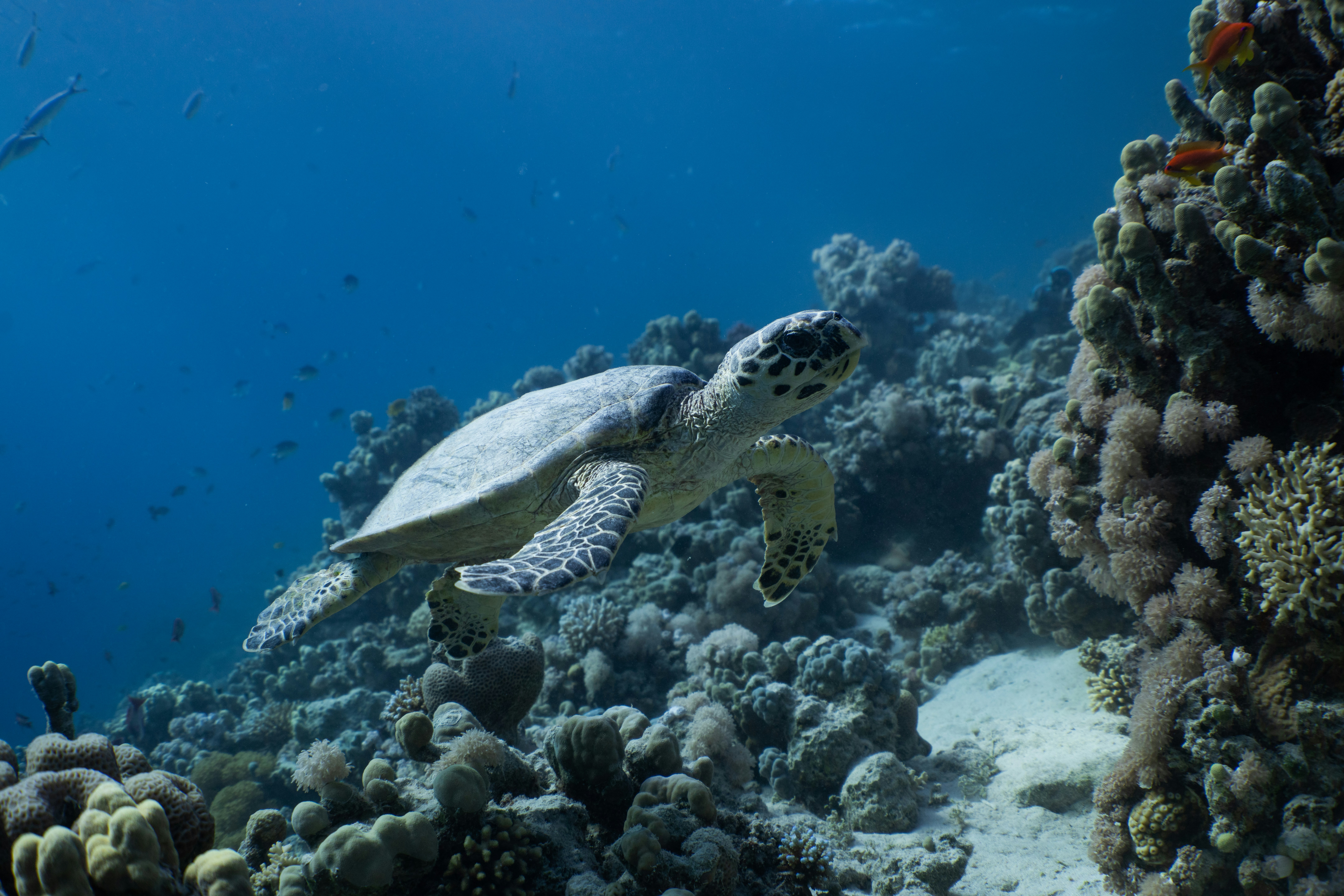Storytelling Close-Up EDEKA: Emotions as a success factor
The supermarket – not just the place where we find our daily bread, but a synonym for prosperity. The consumption concept originally developed in the USA, with its wide range of products and sales-promoting background music, is both a land of milk and honey and everyday life. Here we push our shopping trolleys in front of us between bulging shelves, drag our children past cavities at eye level and find it embarrassing when the EC card doesn’t work at the checkout
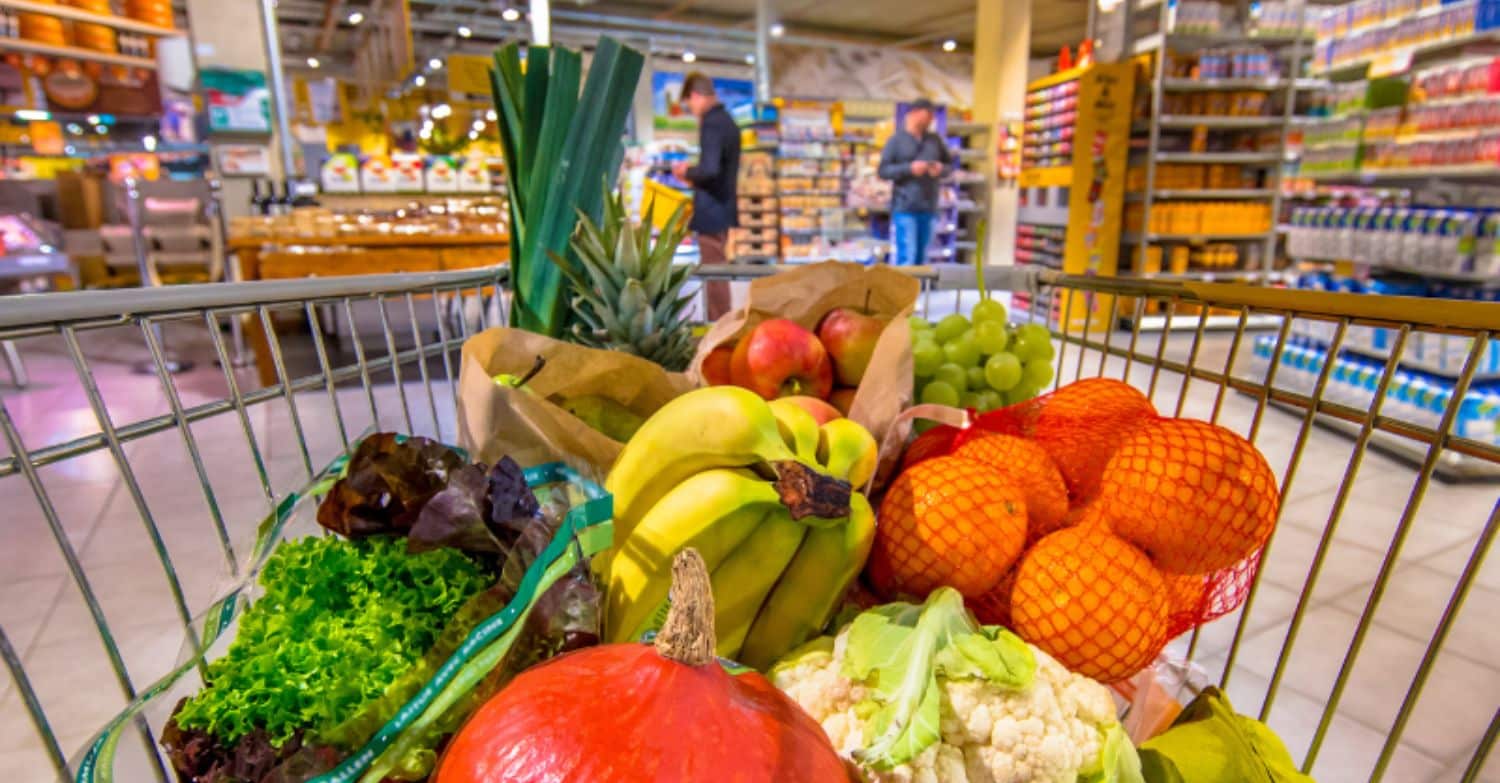
The largest sub-market in the highly competitive retail business is food. The EDEKA brand has a particularly high profile here. The German company has existed for over 125 years. It is the largest food market chain in Germany and one of the leading supermarkets in Europe. The yellow/blue EDEKA association is the cooperative pillar of the brand name and has gained an even stronger appeal through the killer claim “We love groceries”.
With this slogan, EDEKA has managed to reach a broad target group with great emotion, which can be used perfectly as a launch pad for any of their campaigns. The company is omnipresent on television and the internet. To understand the success of the retail giant, it is worth taking a brief look at the past.
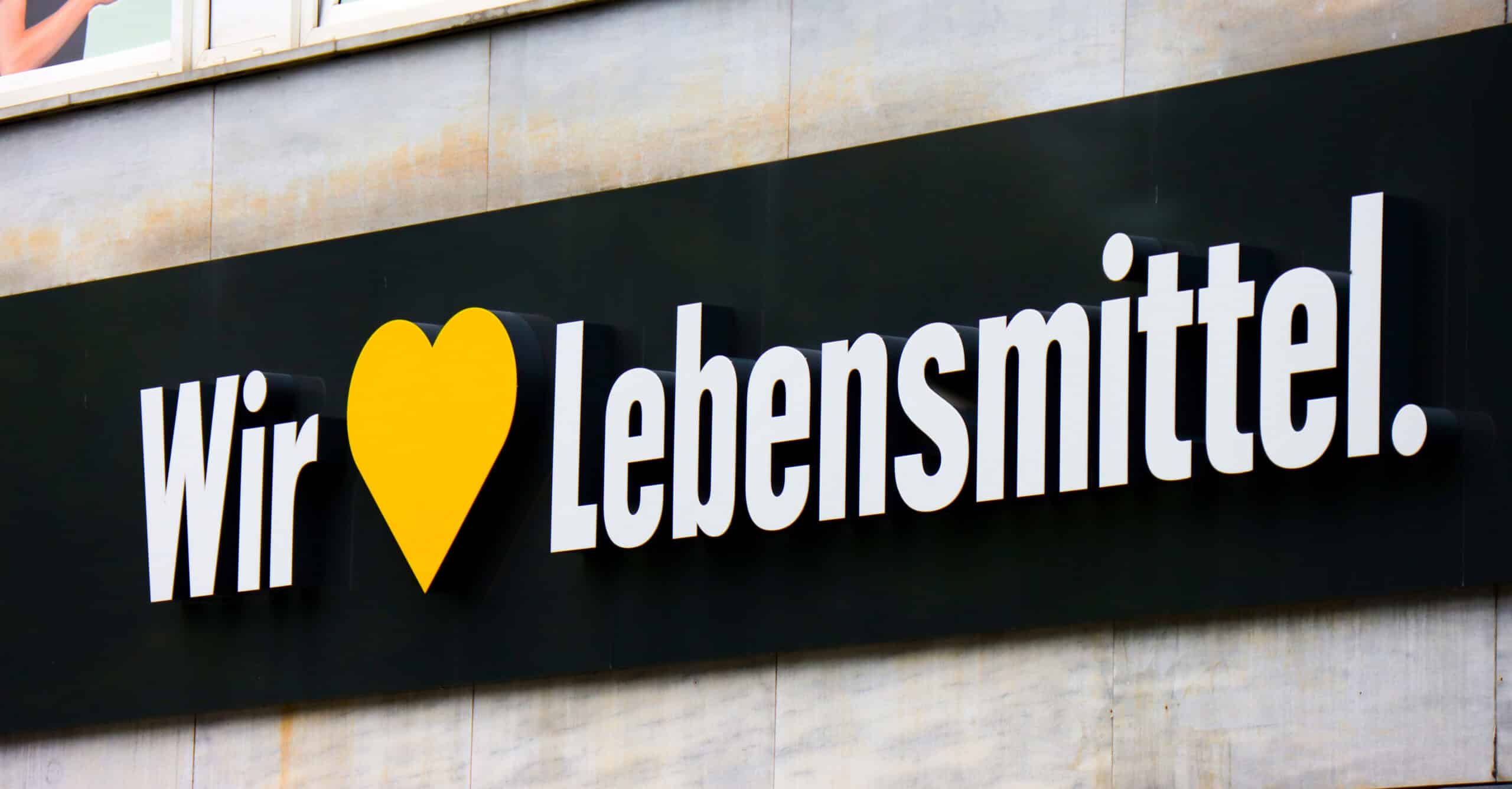
Colonial origins: window dressing competitions
EDEKA was founded in 1898. While the boilers were steaming in industry and the economy of the German Reich was growing, Bismarck introduced statutory pension insurance to get ahead of the labour movement. When there was special news, fanfares still sounded from the town hall balcony.
In this atmosphere, 21 goods traders joined forces in the “Einkaufsgenossenschaft der Kolonialwarenhändler”. They formed the EDEKA Group, or E.D.K. for short. In 1911, ten years after Bismarck’s death, the former abbreviation E.d.K was changed into the brand and company name EDEKA and the voluntary association of people was enlarged by 72 members.
In 1919, in nervous post-war times, the merchants in the German Empire had to get themselves back on their feet. They relied on stronger public relations, especially on so-called shop window competitions. Thus, over a hundred years ago, retailers’ cooperatives were already using premium tenders to boost the very purpose of advertising.
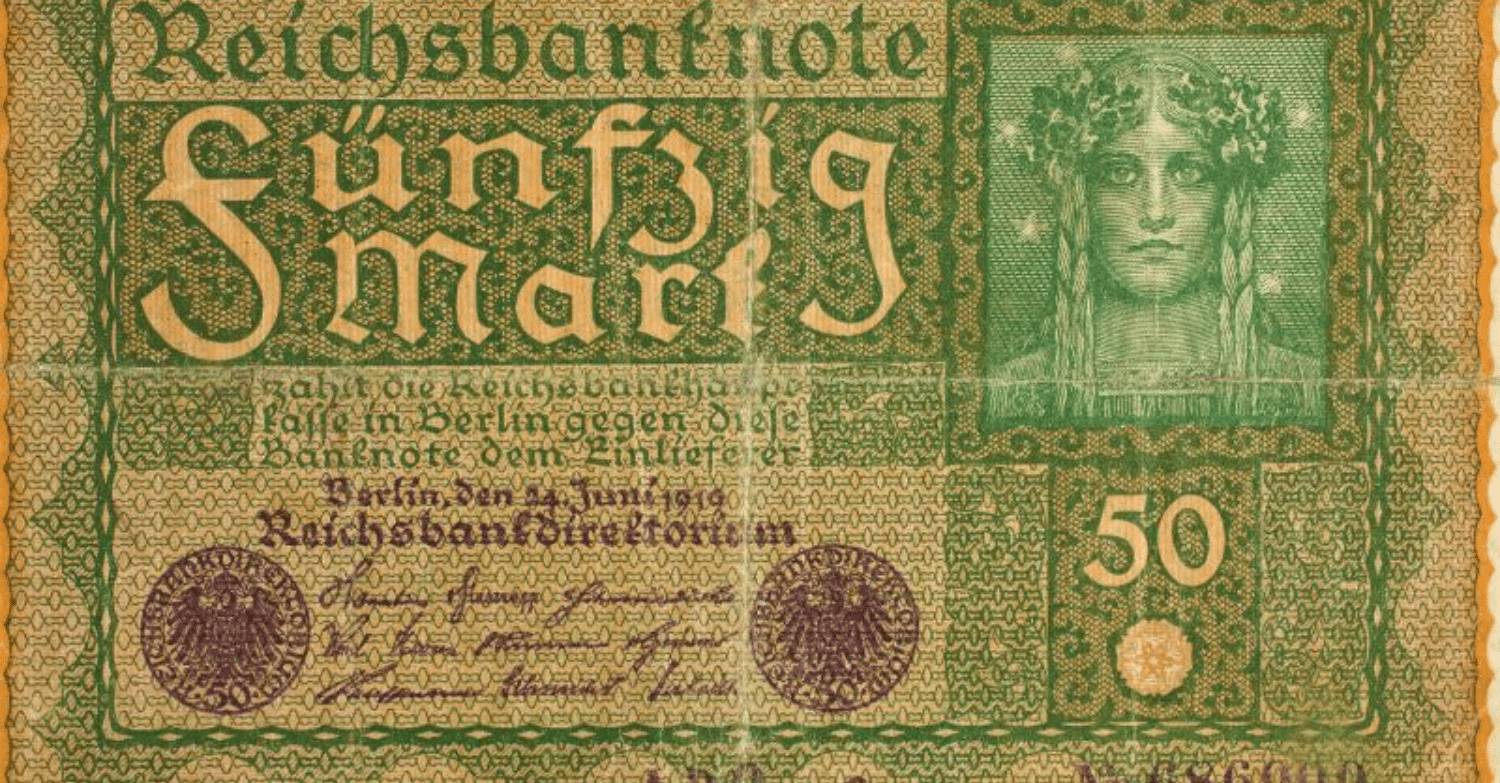
In 1933, Fritz Borrmann, the general manager at the time and also a grocer, voluntarily joined the NSDAP. With the incorporation of the Saar region and Austria into the Third Reich, the Edeka Group was also able to take over these territories. In 1937, Borrmann handed over as general manager to Paul König, who took his place. With the end of National Socialism and the Second World War, EDEKA was initially on the ground.
Under the leadership of Paul König, the group was rebuilt step by step after the Second World War and became a renewed success story. From simple corner shops, the typical branch shop of the EDEKA community transformed into modern self-service shops, the supermarkets, during the economic miracle.
The EDEKA statement: Different marketing campaigns with the same claim
The broader the target group, the more universal the emotions must be with which a company wants to attract attention. According to the slogan, the basis of EDEKA’s success lies in its love of groceries. The company uses this firm brand positioning statement as a launch pad for every project. At the same time, like a colourful matryoshka doll, this claim is always the core of the message on which the marketers strategically cleverly and creatively build their campaigns. In addition to a strong recognition value, the slogan “We love groceries” also conveys the unique selling proposition: Since 2012, a yellow heart has been used to symbolise EDEKA’s well-known love of groceries.
The original brand claim is supplemented and deepened by slogans such as “We love sustainability” and “We love organic”. The videos for the #Vielfalt campaign, for example, show the reactions of customers who discover in a specially prepared branch that there are only products from Germany on the shelves, which means they have to do without the usual abundance of goods. The spot ends with the modified claim “We love diversity”, which is also meant to be understood as a slogan for living diversity beyond the shopping shelves.
“SusTelling“ – Sustainability Storytelling: Panda’s journey along the supply chain
Supermarkets are becoming increasingly interchangeable in their appearance. As a result of low differentiation and high competition, it is necessary for companies to come up with creative ideas and new stories. At the same time, climate change, species extinction and social inequality also challenge us to find new economic paths.
As part of a partnership with the WWF, the retail giant demonstrated the use of sustainable products with the help of “SusTelling” around a panda. For the TV launch, the full-range retailer sent the bear on a journey along the supply chain. In addition, the WWF panda smiled from about 800 products of the supermarket chain. In this way, both partners want to demonstrate what they have already achieved together with the producers in terms of sustainability and what they will achieve in the future..
Hero’s Journey as Emotional Advertising: Masterpiece Status in Storytelling
Numerous EDEKA advertising clips have already become viral hits, for example the Christmas campaigns #heimkommen and #zeitschenken or the nutrition initiative #issso. In addition to enthusiasm, there are also critical discussions, such as accusations of discrimination against obese people and a lot of anger on social networks.
Beyond these controversies, industry insiders often attest to the masterpiece status of promotional videos from a storytelling perspective.
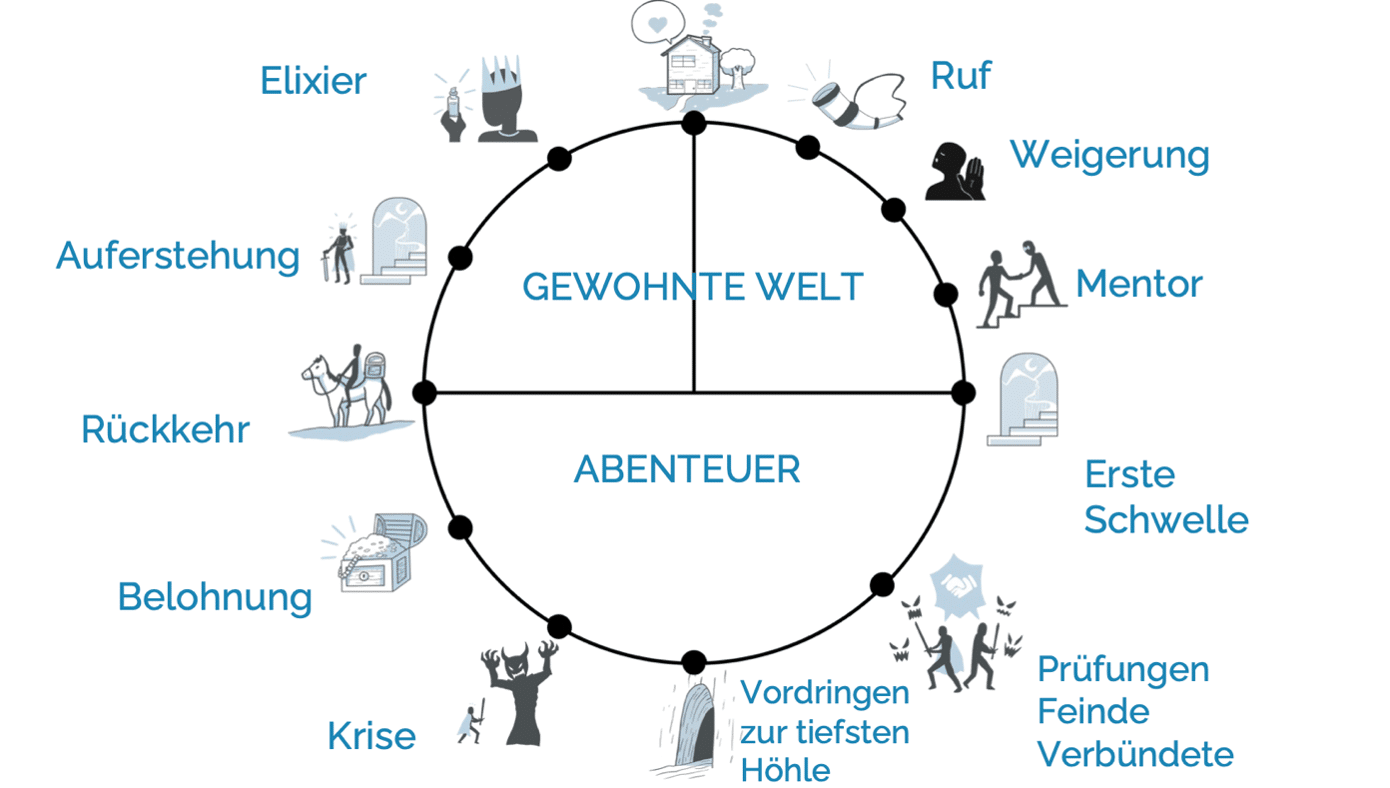
Storytelling in three acts: #Homecoming with EDEKA
The #homecoming TV spot from 2015 is a vivid example of how storytelling is used in advertising and can be broken down into three acts of hook, hold and payoff.
In part one of the introduction, the clip sends us into the location, the plot and the problem: an elderly man who apparently spends Christmas alone. In the central second part, the lonely gentleman is examined in more detail and the twist is presented: He fakes his own death to bring his family home. In part three, the conflicts are resolved in a happy ending.
During the short 1:47 minutes of the video, the viewers should not get the feeling that they are watching a commercial, but rather a well-made short film, with success. The presence of EDEKA products in the spot is only noticeable after several viewings.
Epic storytelling: #issso takes the cake
EATKARUS, on the other hand, is the story of a boy who fulfils his dream of flying. The hero’s journey can be portrayed particularly beautifully with the help of this mythological commercial flight:
Familiar world: grey uniformity and spherical shapes
The spot opens in a dreary city. Everything in this place is grey and spherical. Eatkarus sits at the lunch table with his family in his familiar world. He does not yet feel his lack, but seems unhappy. The images are accompanied by the song “All I Can Do” by Ben Kendrick. It says: “Why does life sometimes feel so wrong like running in circles and you don’t belong? The identification with the boy is almost automatic.
The call: through the bird Eatkarus becomes aware of his lack
Eatcarus’ adventure begins when, saddened by the sight of his usual food, he looks out of the window. There he notices a blackbird that seems full of life and flies away with a light feather. This has a deeper meaning, because it symbolises the moment when the boy first becomes aware of his own lack. Ben Kendrick sings: “I always knew that this day would come it’s time to break free, meet me on the run.
The refusal: a brief moment
The idea of stepping out of the familiar world makes Eatkarus uncomfortable. He is so discouraged by the actual state of affairs that he actually wants to follow the call of the feathered fowl, but becomes uncertain again when he looks at his mother. The soundtrack: “But what am I really running from. And I look up to the open sky, hopes in my heart, dreams in my eye. Will I ever make it right this time.”
Mentors: bird and messenger in one
The bird in the story has a dual role: it acts as a messenger and a mentor. Its ability to soar into the sky inspires the boy to leave the table. The animal and Eatcarus thus enter into a mentor-pupil relationship.
Crossing the first threshold: the mother as an obstacle
The risks of the adventure and the crossing of the threshold into a foreign world are often visualised and dramatically emphasised by other characters. Not infrequently, it is those who are closest to the hero, like the mother in this case. The song underlines this: “I hear the sound of change, it’s everywhere. They’re tryin’ to hold me down, but I don’t care.”
Trials, allies, enemies: scepticism and pride
The other residents are very much caught up in the world they are used to. We see a woman looking sceptically after a bundle of balloons. Eatcarus and his desire for change mean a threat to her world. But when the boy’s father sees the kite outside the window, there is pride in his gaze for a moment.
Advancing to the deepest cave: mental preparation
Eatkarus is too heavy to take off and now also covered in plasters and bruises. He sits at the lunch table again and is served grey mud. He has arrived at his final destination point before the crucial test and is here mentally preparing himself. “And all I can do -And all I can do is try.”
Crisis: just before the goal, on the brink of exhaustion
Even though he has failed, he does not let himself be diverted from his goal. He sets off again and builds himself a winged suit. He follows the bird out of the city to a snow-covered mountain. On the verge of exhaustion, he falls into the snow and cries. Has he lost his mentor and the power?
The reward: food in its true form
But then he discovers the bird again, eating berries from a bush. After a few seconds it flies away. At that moment, Eatkarus and the audience make the connection between the berries and the flying.
Way back and resurrection: building another wing construction
At home, Eatkarus arranges the collected berries on the table and builds a new flying construction. This time he takes more inspiration from nature and attaches feather-like pieces of paper.
Resurrection: a new man
Eatkarus has already changed. His shape is no longer spherical, he is now a slender boy. He stands on the street and admires his self-made wings. Then he turns around, pauses as the music plays, “I won’t give up and I won’t give in -Where it ends is where I begin -But am I really, am I really strong enough -And all I can do- And all I can do is try.”
All the characters he has met along the way are there, watching him fight his last battle. Will he manage to live his life the way he wants to?
Return: goal achieved
The boy wanders through the streets and runs through fields. Then it happens: Eatkarus takes off. He soars side by side with the bird, just as he has always dreamed. Joy! Freedom! He has overcome his fears.
Our hero is lying in the grass eating his healthy berries. He looks up at the sky with a smile. He still cannot fly, but that is not decisive. By changing his habits, he became the person he wanted to be. He is satisfied because he has achieved his goal.
The commercial is once again on YouTube with the note that anyone who also wants to eat more consciously can find tips and inspiration on EDEKA. The epic commercial ends with the sentence: “Eat like the person you want to be” and the EDEKA logo.
Want to get more storytelling insights from big-name companies? Then take a look at our Storytelling Close-Up from “Steiff“.
Share this article
Related articles

11 January 2024


